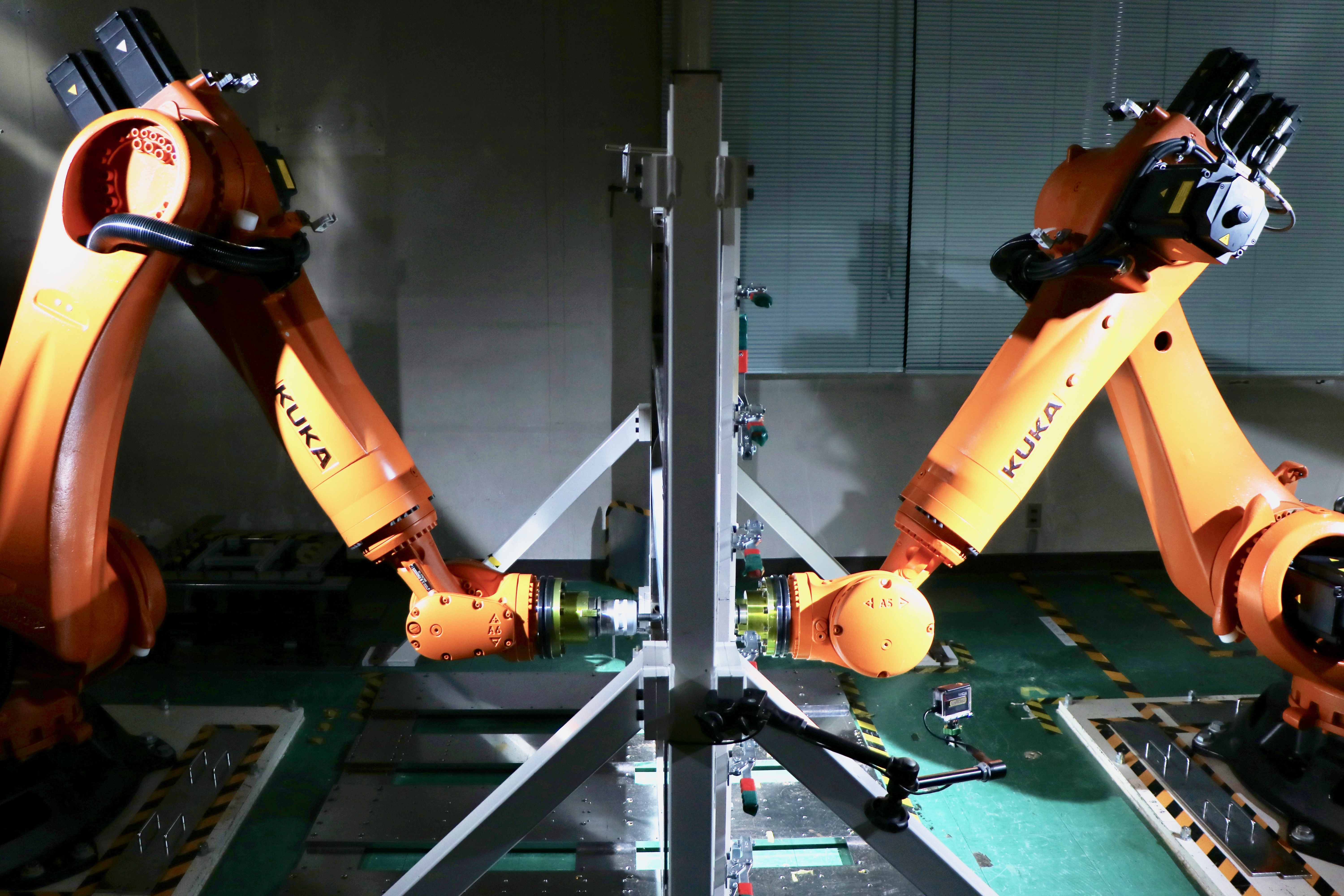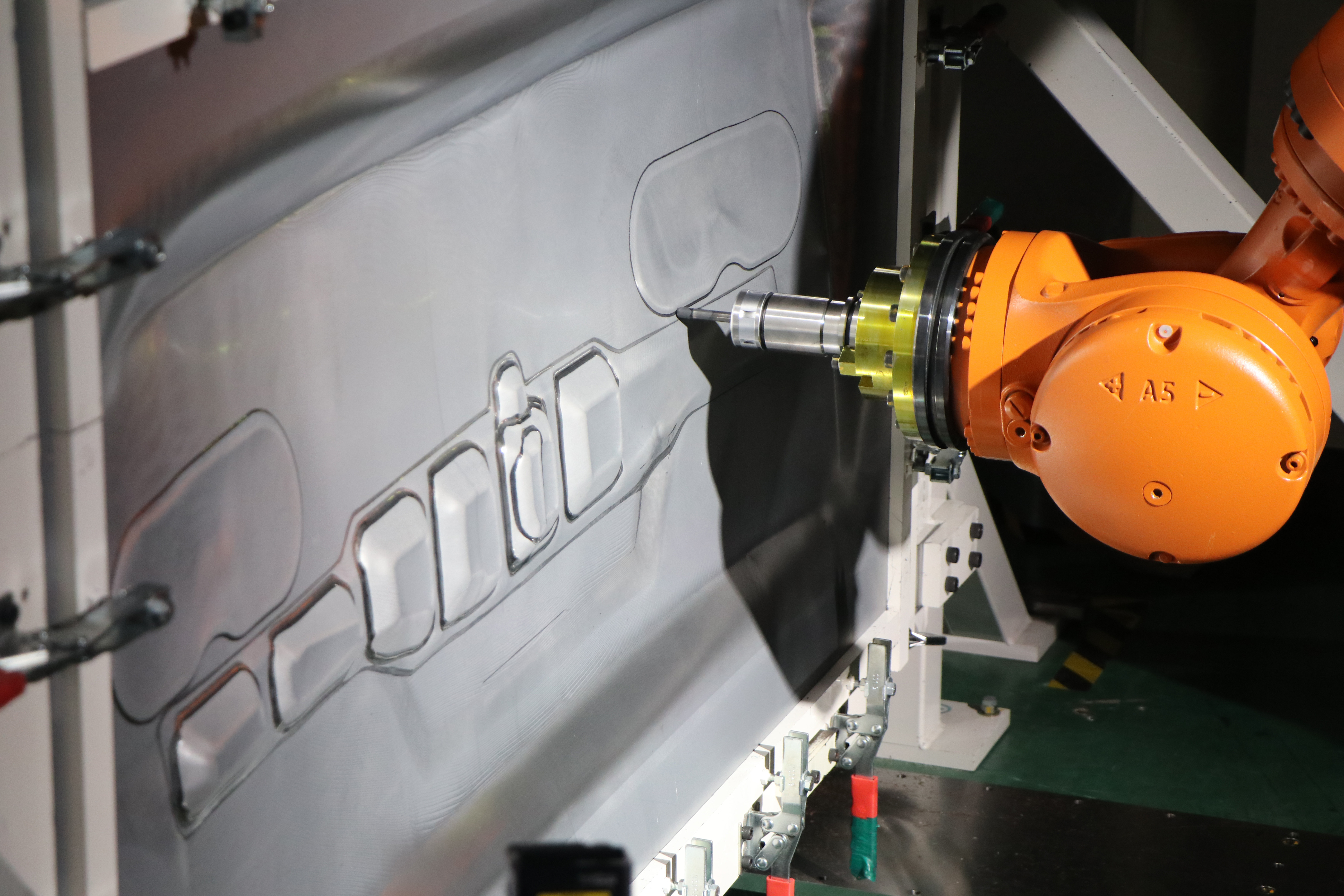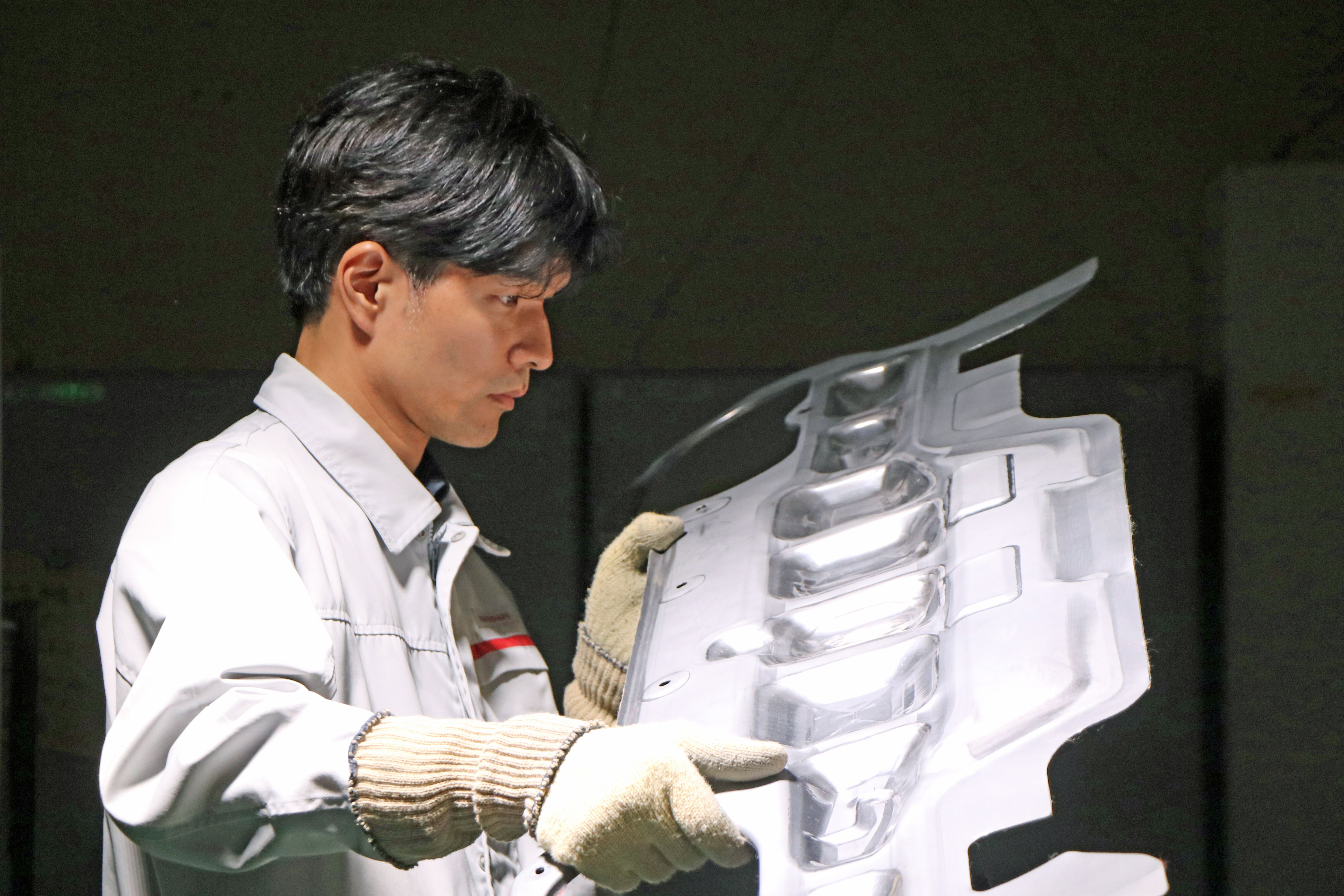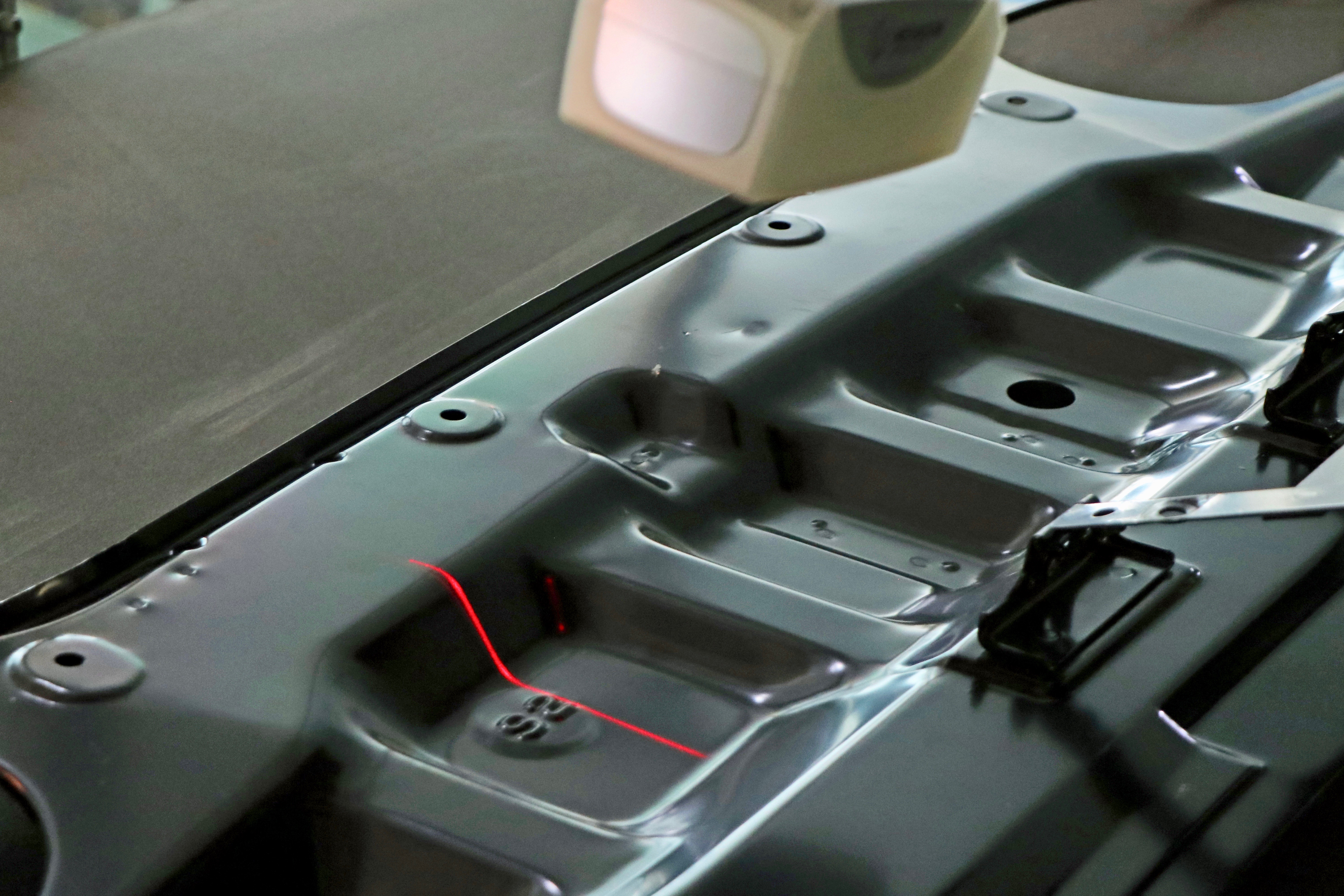(Editor’s note: Click on the closed caption emblem on the video for captions in English.)
Nissan says it has developed a new way to use robots to make replacement parts for vintage vehicles that could make the restoration of those vehicles an easier process. The company plans to commercialize the proprietary technique known as dual-sided dieless forming.


“The technique involves two synchronized robots working from opposite sides of a steel sheet, using diamond-coated tools to gradually shape the steel,” the company said in its announcement.
“Thanks to its flexible production, short lead times and minimal upfront costs, the new technique could make it commercially viable to produce and sell a wide variety of after-service and replacement parts in small volumes for cars that Nissan no longer makes.
“This was previously not possible due to the high upfront costs and long lead times to develop and make dies for stamped parts.
Nissan said getting two robots to operate synchronously while ensuring consistent quality had been a complex obstacle and noted, “Existing techniques have primarily relied on single-sided forming, which limits the complexity of shapes that can be created.”
However, by placing its robots and tools on opposite sides of a steel sheet, Nissan’s Production Engineering Research and Development Division has developed a way to use them to create detailed shapes.


The process, the company said, involved three major breakthroughs:
- The development of advanced programs capable of controlling both robots with a high degree of dimensional accuracy, enabling the formation of detailed convex and concave shapes.
- The application of a mirrored diamond coating to tools, reducing friction while eliminating the need for lubrication. This has numerous benefits, including consistency of surface quality and low-cost, environmentally friendly operation.
- The generation of optimized pathfinding logic for robots, drawing on the ample expertise and press-forming simulation techniques ordinarily used by Nissan’s production engineering teams. This enabled Nissan to achieve high quality results early in the development process.
The company did not announce a timetable for making such parts available.





Ford did the same thing for protyping class A body panels several years ago. Major difference was the steel was horizontal, better for viewing but I like the vertical orientation so the panel doesn’t sag.